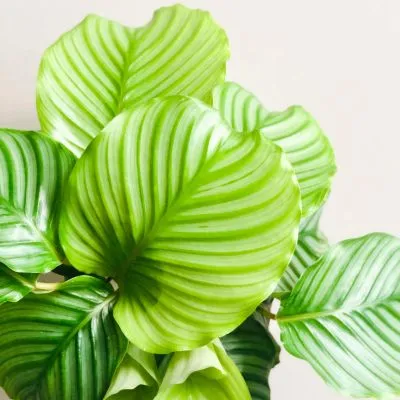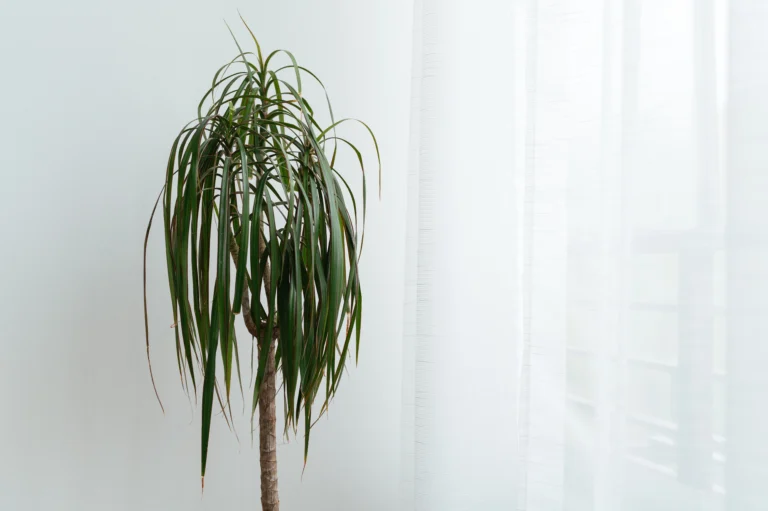Unlock the Secrets to Thriving Calathea Orbifolia Plants at Home
Introduction
Calathea Orbifolia is not just a plant; it’s an expression of natural beauty, transforming any space into a tropical paradise. With the large round leaves adorned with silvery-green streaks, this species attracts admiration from those who view it. While it’s an absolute superstar among indoor plants, keeping its stunning appearance requires diligence and care. This guide will take you deep into the secrets to ensure that your Calathea Orbifolia thrives, providing all the details you need to be successful.
Table of Contents
What Makes Calathea Orbifolia Unique?
The Calathea Orbifolia stands out as one of the most exquisite plants for the home. It is native to the forests that are tropical to South America. It has developed to thrive under the high canopy of taller trees in which light is blocked, and the humidity is high. This is evident in its large, lush leaves, which help it absorb the maximum amount of light.
Aside from its beauty and attractive appearance, Calathea orbifolia helps create a healthy indoor environment.
- Air Purification: like the majority of tropical trees, eliminates pollutants from the air, which can lead to higher-quality indoor air.
- Non-toxic to pets: This is a secure choice for households with curious pets, cats, or even children.
- Improvement in Humidity: Natural transpiration helps add moisture to the air, which has a positive effect in dry climates.
These characteristics make Calathea Orbifolia a perfect plant for those looking for elegance and function in their indoor gardens.
How to Care for Calathea Orbifolia at Home

Care for Calathea Orbifolia requires understanding its roots in the tropical region. Let’s examine each aspect of its care thoroughly.
Ideal Growing Conditions
The most important thing to keep your Calathea Orbifolia healthy is replicating its environment in its native habitat. They thrive in an environment that is reminiscent of the humid, warm rainforest. This is a complete guide to the ideal conditions:
| Aspect | Optimal Requirement |
|---|---|
| Light | Bright, indirect light; avoid direct sunlight |
| Watering | Keep the soil consistently moist but not soggy |
| Humidity | 60–80%; higher is better |
| Temperature | 65–80°F (18–27°C); avoid temperature fluctuations |
| Soil | Rich, organic, and well-draining potting mix |
By observing these rules and adhering to these guidelines, you’ll create the basis for a healthy growth rate and a vibrant leaf.
Watering Tips
It is important to water the Calathea Orbifolia, which is more of an art than it is a science. This plant is a fan of evenly moist soil. However, it is very sensitive to overwatering and poor-quality water. To protect your plant’s health:
- Make sure you use distilled, filtered, or rainwater. Tap water is often contaminated with chlorine and fluoride, which may cause browning of leaves.
- Check the top of the soil using your fingers. If you notice that the soil is dry, you should water it.
- Don’t let the plant remain in water that is stagnant through emptying out the dish under it after you have watered.
Consistency is essential in watering, so be sure to monitor your habits to keep your plants flourishing.
Lighting Requirements
The Calathea Orbifolia’s natural habitat has taller, shaded trees. Therefore, it is a fan of bright, indirect sunlight. The direct sunlight can scorch the delicate leaves, making them swollen or dry on the edges.
- Plant your garden near an east-facing window for a gentle morning light.
- If your house isn’t getting enough sunlight, consider the full spectrum grow light to add.
- Rotate the pot every week to ensure an even exposure to light and balanced growth.
Proper lighting can not only enhance its appearance but also help reduce the stress that can hinder the growth of your child.
Common Challenges and Solutions
Despite the best attention to your Calathea, Orbifolia could face difficulties. Recognizing the signs of stress, as well as their solutions, can help maintain your plant’s health.
Leaf Curling or Drooping
The appearance of drooping or curly leaves can suggest stress in the environment. The most frequent causes are:
- Underwatering: If your soil appears dry, increase the frequency of watering.
- Low Humidity: The plant is a lover of humid air that is moist. Put it in the vicinity of a humidifier or combine it alongside other plant species to make an environment that is a microclimate.
- Temperature Variations: Maintain the plant away from heaters, air conditioners, and windows that are drafty, since sudden temperature fluctuations could shock it.
The adjustments can quickly bring back the vitality of your plant.
Brown Leaf Tips
Tips of brown leaves are among the most frequent issues with Calathea Orbifolia and are typically caused by:
- Minerals in water: Chlorine, fluoride, and other chemicals present in tap water can cause damage to leaves. Making the switch to distilled water frequently helps solve this issue.
- Low humidity: If the air inside your home isn’t moist, you might consider misting the plant on a regular basis or placing it in pebbles that are full of water.
- Fertilizer Burn: Fertilizer burn can result in salt accumulation within the soil. Make sure to dilute the fertilizer to at least half-strength and use only sparingly throughout the growing season.
The solution to these problems will ensure that the leaves remain lush and healthy.
Pests and Diseases
Insects such as spider mites and mealybugs may be a frequent visitor to this Calathea Orbifolia. To treat and prevent infestations:
- Be sure to regularly inspect the leaves, particularly the undersides, which is where pests typically hide.
- Make use of neem oil or insecticidal soap for minor problems.
- For more severe cases, take the plant off and eliminate insects manually prior to applying treatment.
Cleaning regularly and taking care of your home can greatly reduce the chance of catching diseases and pests.
Propagating Calathea Orbifolia

Propagation is a great way to expand your collection of plants or to share your passion for plants with your friends. It is the Calathea Orbifolia is propagated through division, which is the process of separating the root system into smaller.
Step-by-Step Propagation via Division
- Select the right time: The most suitable time to reproduce occurs during growth, which is typically spring or the beginning of summer.
- Prepare the plant: Take the plant from its pot, taking care not to hurt the root system.
- Divide the roots: Make use of a sharp, clean knife to slice your root ball into smaller pieces. Each section should be stocked with healthy roots as well as at least two or three leaves.
- Replant the divisions: Each division should be placed into a fresh pot with soil that is fresh and well-drained.
- Aftercare: Keep the new plants in a warm, humid, and moist environment. Water lightly to encourage root development.
Propagation is not just a way to multiply your plants but can also aid in rejuvenating the plant’s parent.
Styling and Displaying Calathea Orbifolia in Your Home
Its Calathea Orbifolia is a natural centerpiece. The bold foliage draws attention and provides a stylish design to any room. Here are some suggestions to style and display it in a way that is effective:
- Select elegant Pots: Pots with neutral colors or ones that have simple designs that will highlight the unique leaf patterns of the plant. Ceramic pots give a hint of class.
- The Highlight in Living Areas: Then, place your plant in a bright living area in order to draw attention to its beautiful appearance.
- Create a Tropical Cluster: Group it with other tropical plants, such as Monsteras and Philodendrons, to create a lush, jungle-like appearance.
- Use Natural Humidity: Kitchens and bathrooms generally have higher levels of humidity which is ideal plants for the task.
These design ideas will boost the aesthetics of your home while making sure that your plant is healthy.
FAQ: Everything You Need to Know About Calathea Orbifolia
How often do I need to be able to water Calathea Orbifolia?
The top inch of the soil is dry. Make sure to check the soil’s moisture frequently to ensure it remains consistent.
What is the reason my Calathea Orbifolia’s leaves change color?
The yellowing of leaves can indicate the presence of water, drainage issues, or a lack of humidity. Change your routine of care accordingly.
Can Calathea Orbifolia thrive in dim light?
Although it can tolerate dim light, it performs best with bright indirect light. If you need to, utilize a grow light as a help.
Does Calathea Orbifolia safe for pets?
Yes! This plant is not toxic, which makes it ideal for homes with pets.
Do I wash all the leaf matter from Calathea Orbifolia?
Clean the leaves with a damp cloth to get rid of dust and keep them fresh. Regular cleaning can also help keep pests out.
Conclusion: Thriving with Calathea Orbifolia
Care for caring for Calathea Orbifolia is a fulfilling experience. The plant will test you to develop your abilities as a parent while providing you with a beautiful and vibrant appearance. By providing the right environment–consistent moisture, proper lighting, and high humidity–you’ll unlock the secrets to its growth and longevity.
With time and dedication With time and attention, with time and care, your Calathea Orbifolia will flourish and transform your home into an idyllic, tropical oasis. If you’re an experienced gardener or just starting out, this beautiful plant will surely bring joy and beauty to your home.







